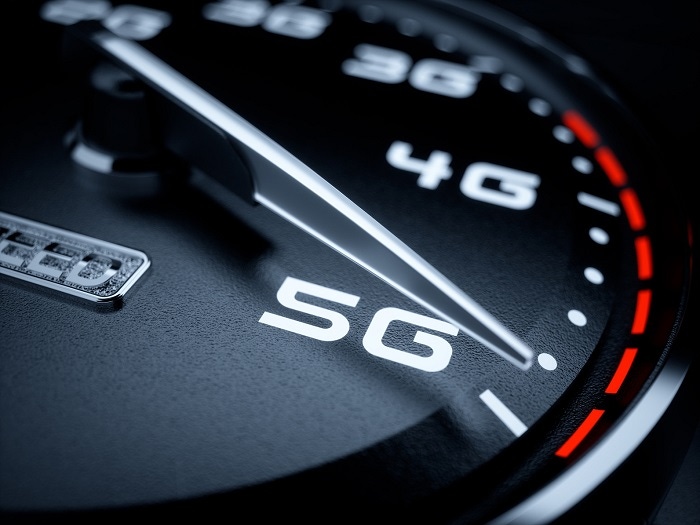It’s becoming increasingly accepted that 5G will be deployed faster than any other generation of mobile technology, but consumer demand is only part of the equation.
April 16, 2019

It’s becoming increasingly accepted that 5G will be deployed faster than any other generation of mobile technology, but consumer demand is only part of the equation.
Many will point to the insatiable appetite for data as the driving force. Telcos are of course under pressure to deliver the promised, and much hyped, era of ubiquitous connectivity, but the demanding nature of the consumer is only part of the equation.
During his keynote session at the Huawei Analyst Summit this week, Rotating Chairman Ken Hu pointed to the speed of progress. Huawei estimates 5G infrastructure deployment and consumer adoption will be faster than any of the generations before it. “The intelligent is coming much faster than we thought, it is here already,” said Hu.
In the first year of 5G, Huawei anticipates it will have shipped more than 100,000 base stations, compared to 400 during the 4G era, while there will four chipsets available to the handset manufacturers. In terms of reaching 500 million users, this milestone was breached after 10 years for 3G and five years for 4G, though Huawei is anticipating it will only be three years for 5G.
All the signs suggest 5G deployment occurring at a faster rate than any of the previous generations of mobile technology, with most commenters pointing towards customer demand for increased connectivity as the driver. But there is more to consider, and Ovum Practice Leader for Network Infrastructure & Software Daryl Schoolar thinks Huawei is ready to capitalise on the opportunity.
“Since the early days of 3G Huawei has built itself in to one of the leading network equipment suppliers in the mobile industry,” said Schoolar. “The company’s continued number one market share position for annual sales of radio access network equipment validates this leadership position. The company has done an excellent job in recognizing emerging market trends and executing on them such as single RAN and small cells. 5G should be no different for Huawei.”
One reason the deployment might be accelerated, which few are pointing to, is that we are simply better at rolling out mobile networks.
Having learned the lessons from previous generations on the logistics of deploying infrastructure, improved design of equipment (size and weight for example), navigating the red-tape maze (planning permission), economics of scale, a trained and readied workforce of field engineers and existing cell sites ready for upgrades, the process of creating a 5G network might well be simpler. There are of course new challenges to a new proposition, but this isn’t necessarily starting from scratch like it would have been in years gone.
“Huawei has been actively addressing the needs of mobile operators for quick and efficient network deployment solutions,” said Schoolar. WHuawei’s smaller modular base station designs that support a greater variety of deployment site options and need less power than previous radio networks support operators in meeting this goal and shows why Huawei plays a leading role in 5G.”
This experience will play an increasingly important role in delivering the upgraded connectivity hype at a quicker pace, though the accelerated consumer adoption might also have other factors to thank.
Most will assume consumer adoption will be faster due to the data appetites of the consumers and increasingly complex usecases, but then again, it might just be quicker due to the availability of devices.
This week, we got the chance to visit Huawei’s smartphone production line in Shenzhen and the process was remarkable. From chipset to packaging, a device can be manufactured and produced in two hours. This does not take into account the 10.5 hours of testing, but this is some speed to manufacture a smartphone.
In the plant we visited, 17 humans work on the production line, with automation increasingly play a role day by day. With 2,400 smartphones being manufactured over two eight-hour shifts, along 35 different production lines, Huawei claims to be able to manufacture close to 80,000 devices per day.
The device we saw being manufactured was the P20, though re-configuring the machine for a different model can be done within 24 hours. The times and output vary from device to device, but the numbers are still incredibly impressive, and inconceivable during yesteryear.
This is perhaps one of the most important reasons as to why 5G adoption will be accelerated compared to 3G and 4G; the manufacturing process has improved dramatically. Once economy of scale kicks in, these devices will become cheaper, offering more incentive to the consumer, increasing adoption rates further.
The demand for data will certainly be a factor when considering the accelerating deployment of 5G infrastructure and adoption of the devices, but there is more to consider.
It’s a simple idea, but the simple ones are often overlooked; as an industry, we might just be better at what we do compared to a decade ago.
About the Author(s)
You May Also Like








.png?width=300&auto=webp&quality=80&disable=upscale)


_1.jpg?width=300&auto=webp&quality=80&disable=upscale)


.png?width=800&auto=webp&quality=80&disable=upscale)